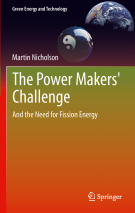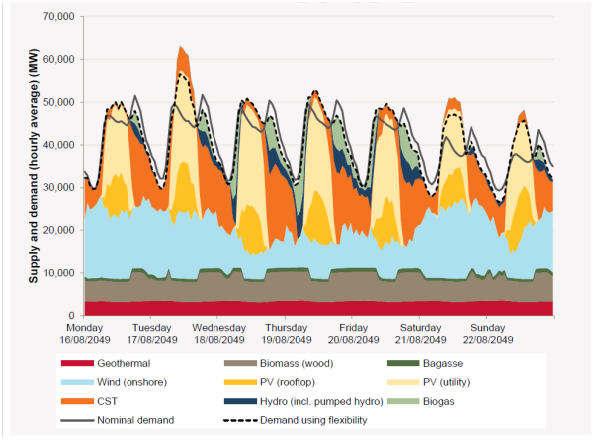
 Guest Post by Martin Nicholson. Martin studied mathematics, engineering and electrical sciences at Cambridge University in the UK and graduated with a Masters degree in 1974. He published a peer-reviewed book on low-carbon energy systems in 2012: The Power Makers’ Challenge: and the need for Fission Energy
Guest Post by Martin Nicholson. Martin studied mathematics, engineering and electrical sciences at Cambridge University in the UK and graduated with a Masters degree in 1974. He published a peer-reviewed book on low-carbon energy systems in 2012: The Power Makers’ Challenge: and the need for Fission Energy
———————-
In late April 2013, the Australian Energy Market Operator (AEMO) released its draft report titled 100 Per Cent Renewables Study – Draft Modelling Outcomes. The study was commissioned by the Department of Climate Change and Energy Efficiency (DCCEE) to explore future scenarios for the National Electricity Market (NEM) fuelled entirely by renewable resources.
AEMO provided scenarios for a 100 per cent renewable electricity supply at 2030 and 2050 along with the generation plant and the major transmission networks required to support each scenario. The study included estimated capital cost requirements for each scenario and an indicative estimate of the impact on customer energy prices.
AEMO found that a 100 per cent renewable system is likely to require much higher capacity reserves than a conventional power system. They estimated that the generation nameplate capacity could need to be over twice the maximum customer demand.
Assuming the reason for commissioning the report was to reduce greenhouse gas (GHG) emissions from electricity generation, it is disappointing that the DCCEE didn’t also request that nuclear power be included along with the renewable resources.
According to AEMO, to convert the NEM to a 100 per cent renewable system will cost at least $219 to $332 billion. This is excluding significant costs for the land (which could be as much as 5,000 sq kms) and augmentation of the distribution network. This is starting to sound worse than the recent high-speed train proposal from Melbourne to Brisbane.
According to the Australian Energy Regulator, the current NEM has an installed capacity of 46 GW made up of 26 GW of coal plants, 9 GW of gas, 8 GW of hydro and just over 2 GW of wind.
The following analysis is partly based on a paper I will present at a conference in July this year.
Filed under: Emissions, Future, Renewables, Scenarios | 4 Comments »






.png)






